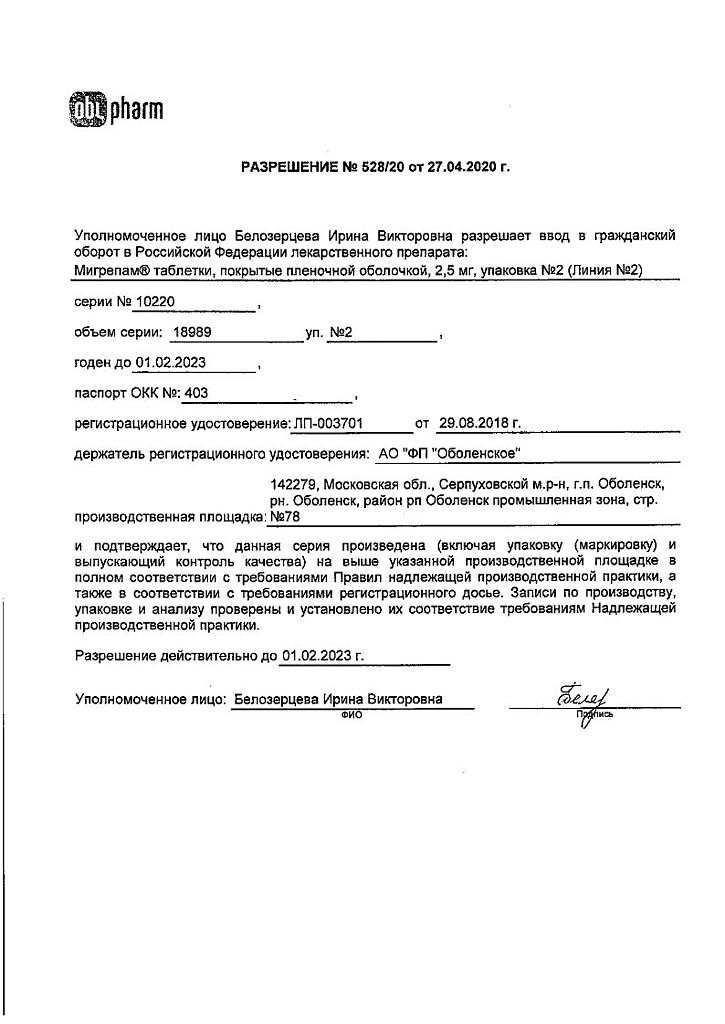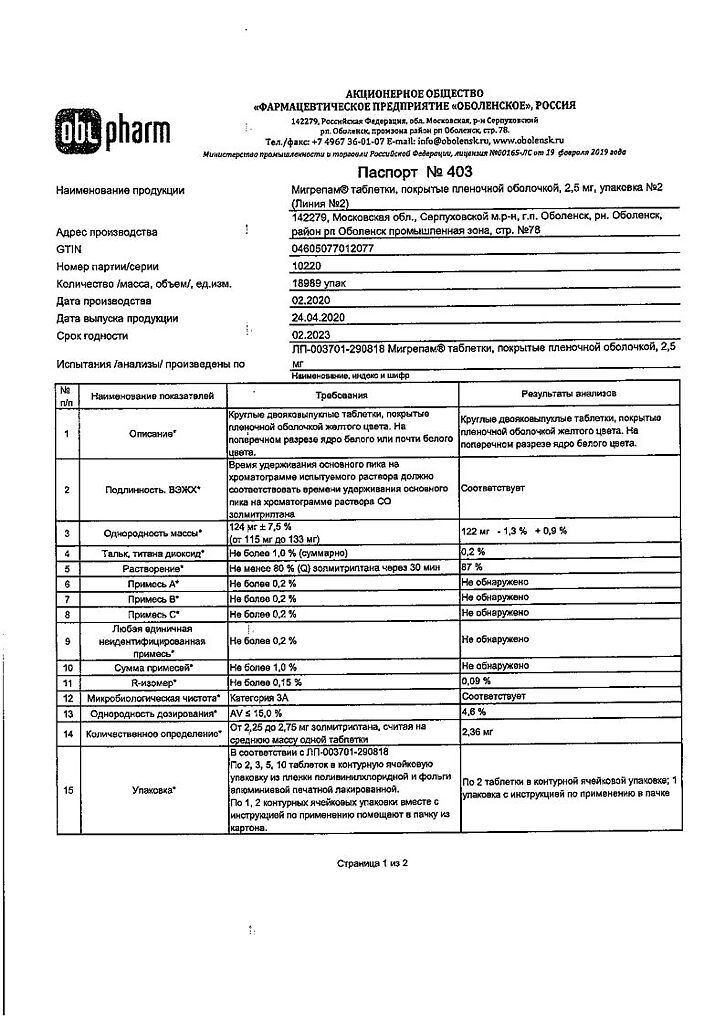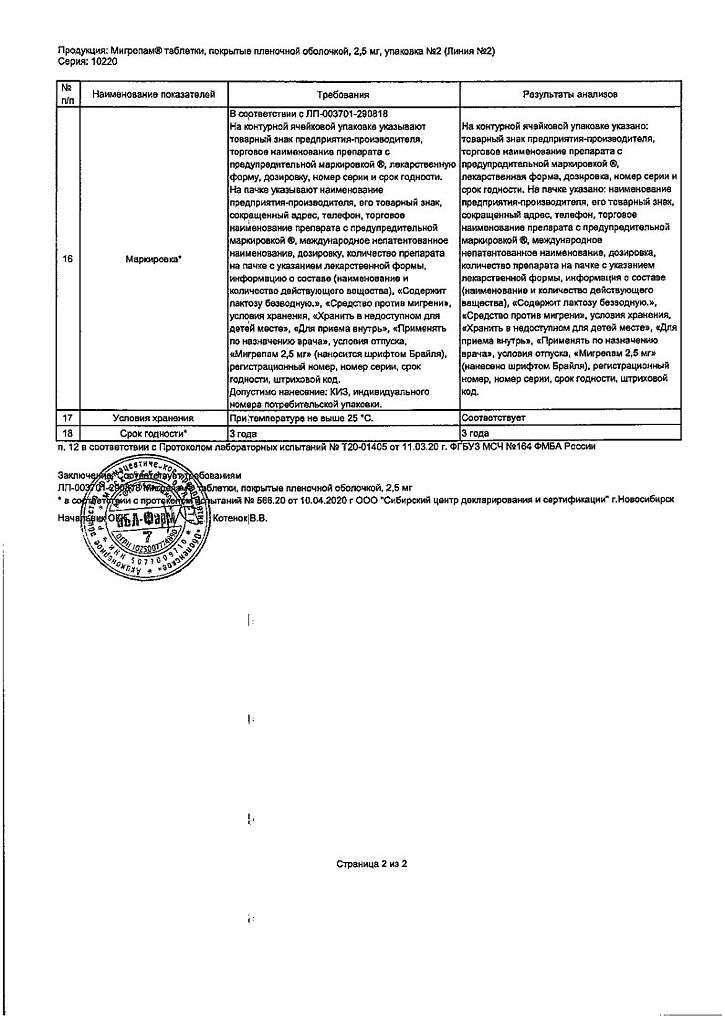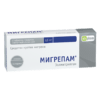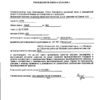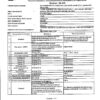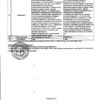No products in the cart.
Migrapam, 2.5mg 2 pcs.
€10.82 €9.47
Description
Zolmitriptan is a selective agonist of serotonin 5NT1B/1D receptors, stimulation of which leads to vasoconstriction. It has high affinity for recombinant human serotonin 5NT1B/1D receptors and moderate affinity for serotonin 5NT1A receptors. Zolmitriptan has no affinity and shows no significant pharmacological activity towards serotonin 5NT2, 5NT3, 5NT4, adrenergic, histamine, muscarinic and dopaminergic receptors.
The administration of zolmitriptan to laboratory animals led to vasoconstriction in the carotid artery basin. In addition, the results of studies on laboratory animals indicate that zolmitriptan blocks central and peripheral trigeminal nerve activity by inhibiting the release of calcitonin gene-related peptide, vasoactive intestinal peptide and substance P.
In clinical studies, the effect of zolmitriptan on headache and other migraine symptoms (such as nausea, photophobia, phonophobia) was noted after 1 hour and increased from 2 to 4 hours after taking the drug.
Zolmitriptan is equally effective for migraine with aura, migraine without aura and migraine associated with menstruation. Taking zolmitriptan during aura did not prevent migraine headaches, so the drug should be taken after the onset of a pain attack.
Indications
Indications
Curing migraine attacks with and without aura.
Active ingredient
Active ingredient
Composition
Composition
1 tablet contains:
The active ingredient:
zolmitriptan 2.5 mg;
Associates:
Lactose anhydrous 98.0 mg,
Microcrystalline cellulose 15.0 mg,
Sodium carboxymethyl starch (sodium starch glycolate) 3.0 mg,
Magnesium stearate 1.5 mg;
Supplementary substances for coating:
hypromellose (hydroxypropyl methylcellulose 2.4 mg, macrogol 6000 (polyethylene glycol 6000) 0.55 mg,
titanium dioxide 0.6 mg,
talc 0.39 mg,
iron oxide yellow 0.06 mg.
How to take, the dosage
How to take, the dosage
The tablets are taken orally with water.
The recommended dose for a migraine attack is 2.5 mg (1 tablet). It is recommended to take the drug as soon as possible after the beginning of a headache, but the drug is also effective when taken later after the beginning of the attack. If migraine symptoms recur within 24 hours, a second dose of Migrapam® may be taken. Do not take the second dose earlier than 2 hours after the first dose. If there is no clinical benefit after the first dose, a second dose during the same seizure is unlikely to be of benefit.
If the patient has not achieved a therapeutic effect after a dose of 2.5 mg, a dose of 5 mg (2 pills) of Migrapam® may be used to relieve subsequent migraine attacks.
Do not take more than 2 doses of Migrapam® per day. The total dose of zolmitriptan taken during a day should not exceed 10 mg (4 tablets).
Migrapam® is not indicated for migraine prophylaxis.
Interaction
Interaction
The results of studies with healthy volunteers suggest that there is no pharmacokinetic and clinically significant interaction between zolmitriptan and ergotamine. However, due to the theoretical risk of coronary angiosnemesis, simultaneous use of these drugs is contraindicated. It is recommended to use zolmitriptan not earlier than 24 hours after taking ergotamine or its derivatives.
In studies on interaction of zolmitriptan with caffeine, ergotamine, dihydroergotamine, paracetamol, metoclopramide, pizotifen, fluoxetine, rifampicin and propranololol no clinically significant changes in pharmacokinetic parameters of zolmitriptan and its active metabolite were found.
A slight increase (26%) in the AUC of zolmitriptan and a threefold increase in the AUC of its active metabolite were observed after the use of moclobemide (MAO-A inhibitor).
After administration of cimetidine, a cytochrome P450 inhibitor, there was a 44% increase in the elimination half-life of zolmitriptan and a 48% increase in the AUC. The elimination half-life and AUC of the active N-desmethylated metabolite were doubled. Therefore, for patients taking cimetidine, the total dose of zolmitriptan taken during a day should not exceed 5 mg. Based on the general interaction profile of zolmitriptan, the possibility of its interaction with CYP1A2 cytochrome P450 isoenzyme inhibitors cannot be excluded. Therefore, for patients taking selective CYP1A2 isoenzyme inhibitors (e.g. fluvoxamine, ciprofloxacin and other quinolones) the total dose of zolmitriptan taken during a day should not exceed 5 mg.
Pharmacokinetic interaction of zolmitriptan with selegiline (MAO-B inhibitor) and fluoxetine (selective serotonin reuptake inhibitor (SSRI) has not been confirmed. However, cases of serotonin syndrome have been described when using triptans and SSRIs or SSRIs (selective serotonin and norepinephrine reuptake inhibitors) simultaneously (see section “Special Precautions”). Like other serotonin 5 HT1B/1D receptor agonists, zolmitriptan may delay absorption of other drugs.
Side effects may be more frequent when triptans and herbal preparations containing St. John’s Wort (Hypericum perforatum) are taken simultaneously.
Special Instructions
Special Instructions
The drug Migrapam® may be used only in cases of clearly diagnosed migraine. Before prescribing zolmitriptan, as well as other means for migraine control, it is necessary to exclude other possible serious neurological diseases in patients with previously undiagnosed migraine, as well as in patients with established diagnosis of migraine in the presence of atypical symptoms.
Zolmitriptan is not indicated for the treatment of hemiplegic, basilar and ophthalmoplegic migraine.
Patients taking serotonin 5NT1B/1D -receptor agonists have experienced cerebral circulation disorders, including strokes. Patients with migraine may be at risk of developing certain cerebral circulatory disorders.
Should not use zolmitriptan in patients with Wolff-Parkinson-White syndrome or arrhythmias associated with other accessory pulse pathways.
Very rarely coronary angiospasm, angina pectoris and myocardial infarction have been reported with this class of drugs (serotonin 5NT1B/1D -receptor agonists).
Before prescribing zolmitriptan, patients with risk factors for coronary heart disease (CHD) (e.g., smoking, arterial hypertension, hyperlipidemia, diabetes, and a strong family history of CHD) should have a cardiovascular examination and monitor blood pressure and electrocardiogram. Particular attention should be given to postmenopausal women and men over 40 years of age in the presence of these risk factors. However, not all patients have cardiovascular disease on examination, and in very rare cases serious cardiovascular complications may develop in patients with no history of cardiovascular disease.
As with other serotonin 5NT1B/1D -receptor agonists, sensations of heaviness, pressure or tightness in the heart region have been reported with zolmitriptan. If chest pain or symptoms of coronary heart disease occur, zolmitriptan should be discontinued until appropriate medical evaluation is performed.
As with other serotonin 5NT1B/1D -receptor agonists, transient increases in blood pressure have been reported in patients regardless of a history of arterial hypertension (very rarely this increase in blood pressure was clinically significant). The recommended doses of zolmitriptan should not be exceeded.
Side effects may be more frequent when triptans and herbal preparations containing St. John’s Wort (Hypericum perforatum) are taken simultaneously. The development of serotonin syndrome has been noted with concomitant use of triptans and SSRIs or SSRIs. Serotonin syndrome may include the following signs and symptoms: mental status changes, autonomic and neuromuscular symptoms. Close monitoring of patients is recommended during concomitant administration of Migrapam® and SSRIs or SSRIs, especially during therapy initiation, dose increase, or addition of another drug affecting serotonin metabolism to therapy (see section “Interaction with other medicinal products”).
Excessive use of antimigraine medications may lead to an increase in the frequency of headache, potentially requiring withdrawal of treatment. If a patient has frequent or daily headaches despite regularly taking medications to treat this condition, be aware of the possibility of headache development with excessive use of headache therapy medications.
Impact on ability to drive vehicles and machines:
There has been no significant impairment in performance of psychomotor tests when taking zolmitriptan at doses up to 20 mg. In patients whose activities require high speed psychomotor reactions (e.g., driving or operating machinery), caution is advised because of the possible development of drowsiness and other migraine symptoms.
Contraindications
Contraindications
With caution:
Severe impairment of liver function.
Side effects
Side effects
Adverse reactions when using zolmitriptan usually occur within 4 hours after taking the drug, are transient and resolve spontaneously without treatment. The frequency of adverse reactions does not increase with repeated doses.
The incidence of adverse reactions is presented according to the WHO classification: very common (â¥1/10 cases), common (â¥1/100 and <1/10 cases), infrequent (â¥1/1000 and <1/100 cases), rare (â¥1/10000 and <1/1000 cases) and very rare (<1/10000 cases).
Central nervous system disorders: often – sensory disturbances, dizziness, hyperesthesia, paraesthesia, somnolence, feeling of “heat” or “cold”, vertigo.
Cardiovascular system: frequently – feeling of palpitations; infrequently – tachycardia, slight increase in blood pressure, transient increase in blood pressure; very rarely – myocardial infarction, angina pectoris, coronary angiospasm.
Gastrointestinal tract: frequently – abdominal pain, nausea, vomiting, dry mouth, dyspepsia, dysphagia; very rarely – ischemia or infarction (e.g., ischemia or infarction of the colon, spleen infarction), symptoms of which may include diarrhea with blood and abdominal pain.
Muscular system disorders: often – muscle weakness, myalgia.
Urinary system disorders: infrequent – polyuria, frequent urination; very rare – urgent urge to urination.
The immune system: rarely – hypersensitivity reactions, including urticaria, angioedema and anaphylactic reactions.
General disorders: often – asthenia, inertia, feeling of tightness of breath, pain or tightness in the throat, neck, chest or extremities, increased sweating.
Some of these symptoms may be symptoms of migraine.
Overdose
Overdose
Symptoms
A single oral dose of 50 mg of zolmitriptan in healthy volunteers usually had a sedative effect. The half-life of zolmitriptan is 2.5-3 hours, so if an overdose occurs, the patient should be monitored for at least 15 hours or until symptoms of overdose are present.
Treatment
There is no specific antidote for zolmitriptan. In cases of severe intoxication, intensive care measures are recommended, including restoration and maintenance of airway patency, provision of adequate oxygenation and ventilation, and monitoring and support of cardiovascular function.
The effect of hemodialysis and peritoneal dialysis on the serum concentration of zolmitriptan has not been established.
Similarities
Similarities
Additional information
| Manufacturer | Alium JSC, Russia |
|---|---|
| Medication form | pills |
| Brand | Alium JSC |
Related products
Buy Migrapam, 2.5mg 2 pcs. with delivery to USA, UK, Europe and over 120 other countries.


